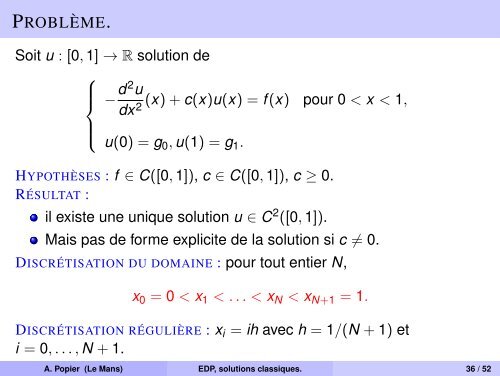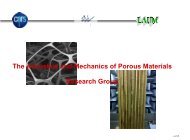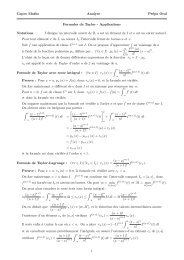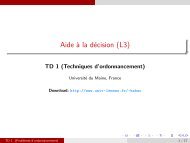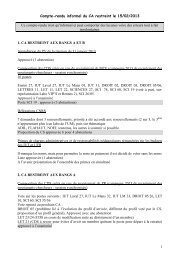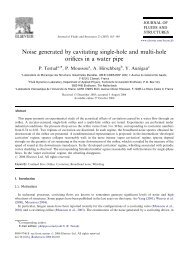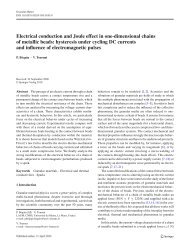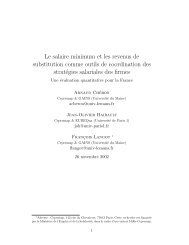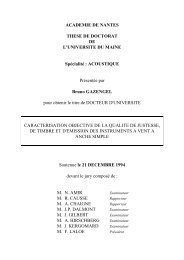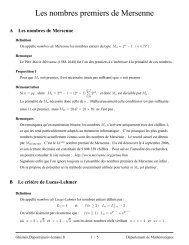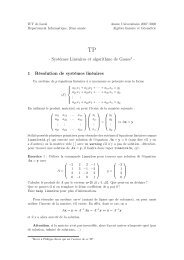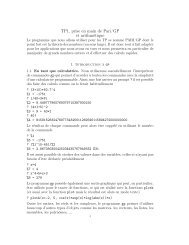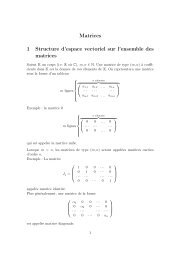Ãquations aux dérivées partielles, solutions classiques. Différences ...
Ãquations aux dérivées partielles, solutions classiques. Différences ...
Ãquations aux dérivées partielles, solutions classiques. Différences ...
You also want an ePaper? Increase the reach of your titles
YUMPU automatically turns print PDFs into web optimized ePapers that Google loves.
PROBLÈME.<br />
Soit u : [0, 1] → R solution de<br />
⎧<br />
⎪⎨ − d 2 u<br />
(x) + c(x)u(x) = f (x) pour 0 < x < 1,<br />
dx 2<br />
⎪⎩<br />
u(0) = g 0 , u(1) = g 1 .<br />
HYPOTHÈSES : f ∈ C([0, 1]), c ∈ C([0, 1]), c ≥ 0.<br />
RÉSULTAT :<br />
il existe une unique solution u ∈ C 2 ([0, 1]).<br />
Mais pas de forme explicite de la solution si c ≠ 0.<br />
DISCRÉTISATION DU DOMAINE : pour tout entier N,<br />
x 0 = 0 < x 1 < . . . < x N < x N+1 = 1.<br />
DISCRÉTISATION RÉGULIÈRE : x i = ih avec h = 1/(N + 1) et<br />
i = 0, . . . , N + 1.<br />
A. Popier (Le Mans) EDP, <strong>solutions</strong> <strong>classiques</strong>. 36 / 52


